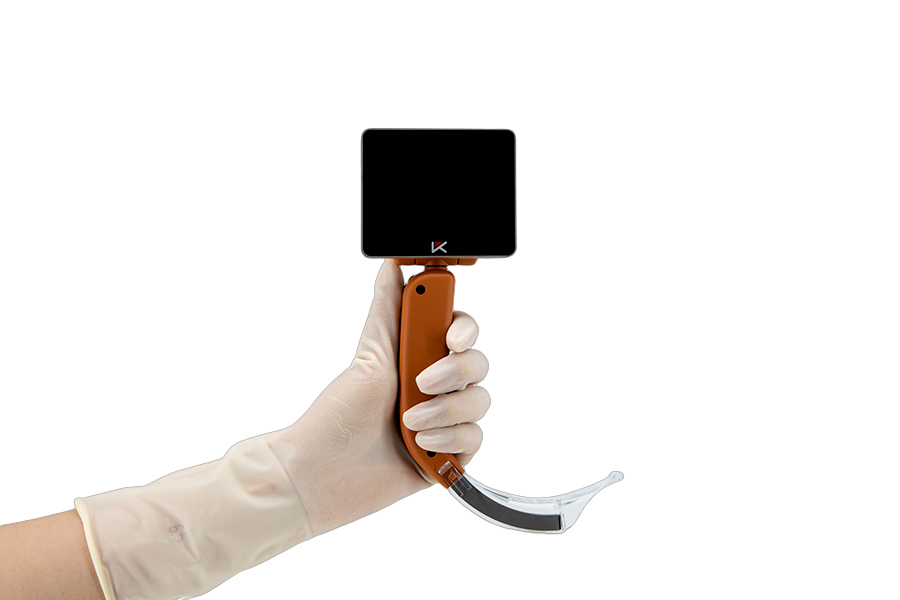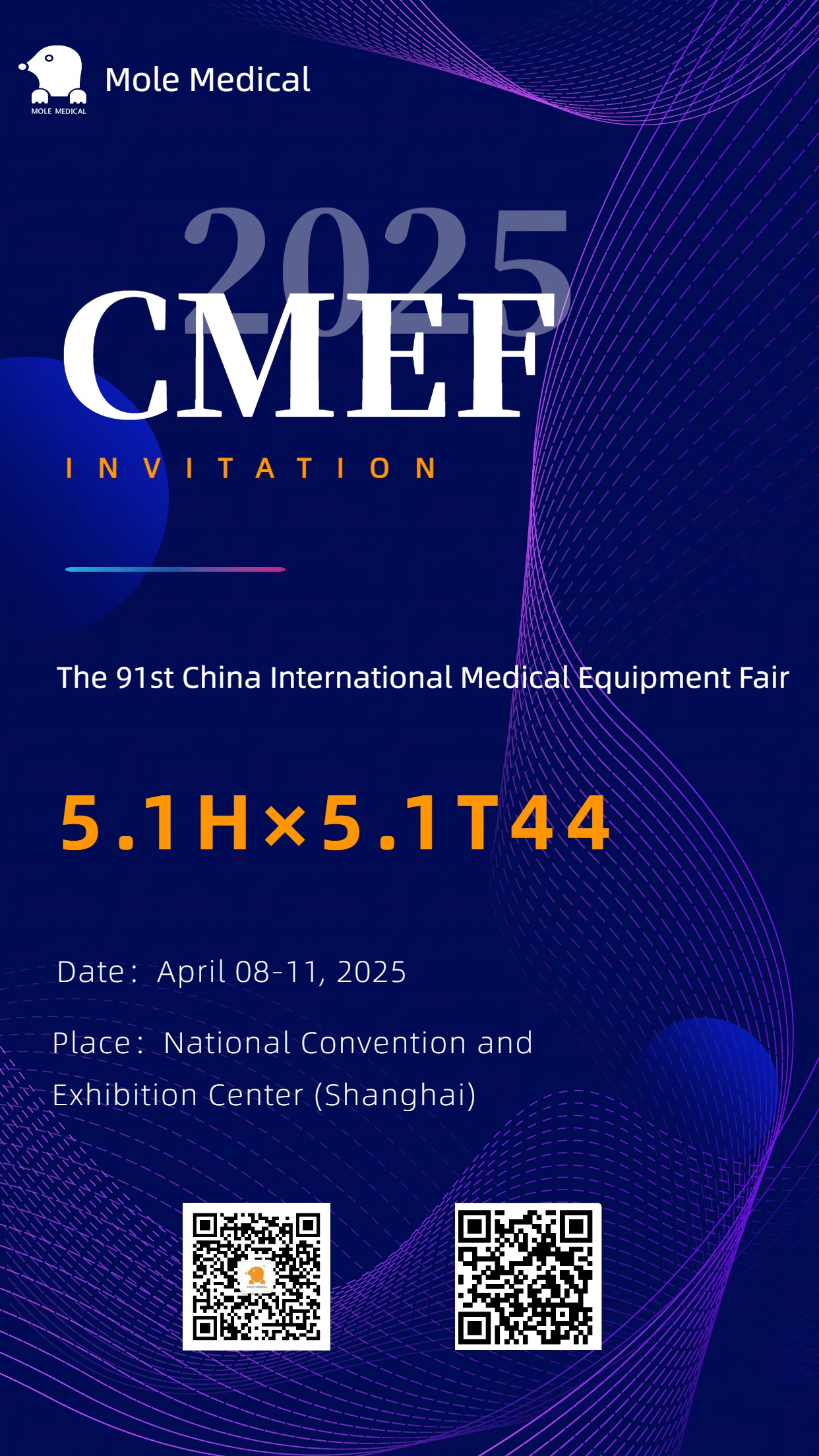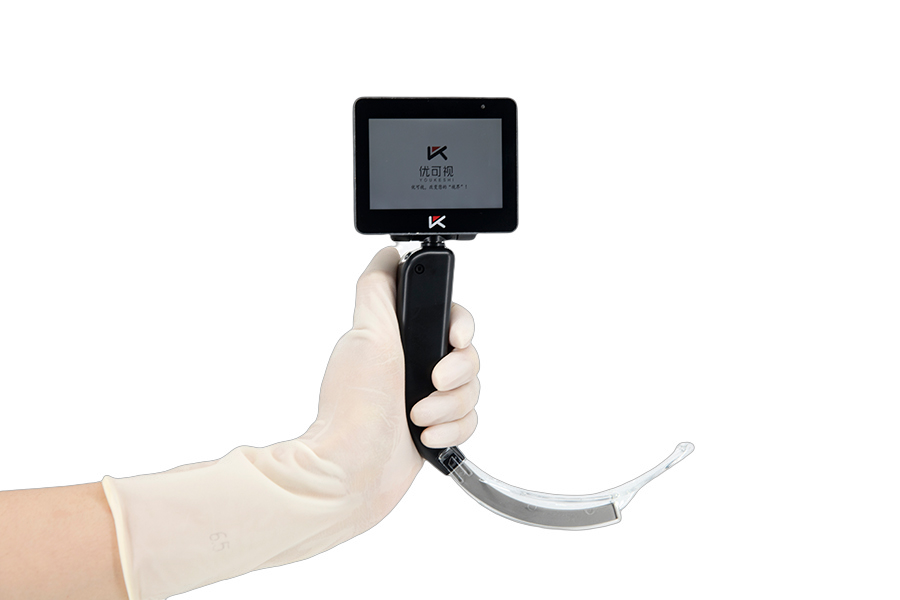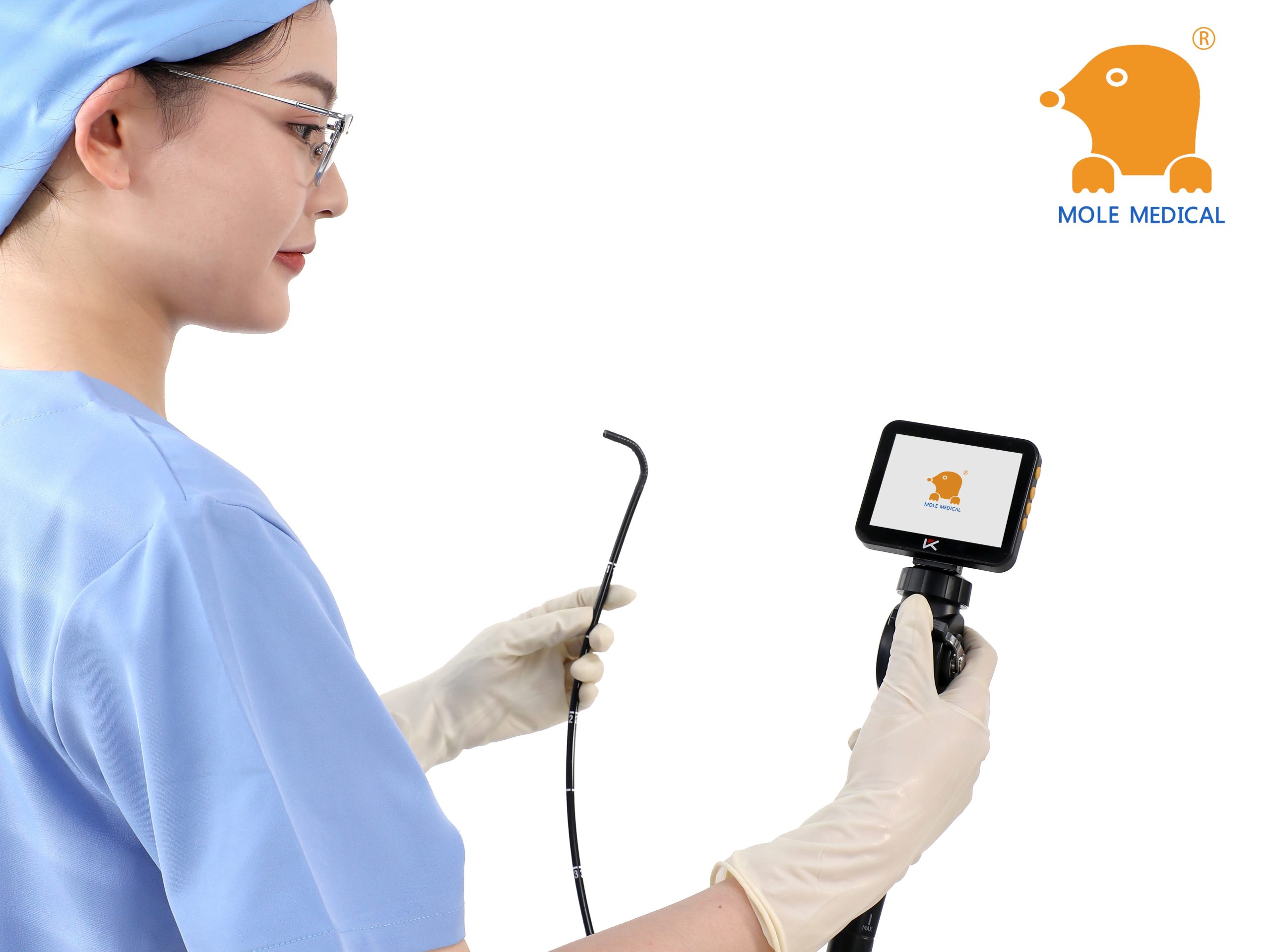2024 Popular Pediatric Video Laryngoscope: Look into
Feb 16, 2024
The journey of pediatric video laryngoscopes involves navigating challenges, celebrating success stories, and embracing future trends. Mole Medical’s contribution to this transformative field emphasizes the importance of ongoing education, maintenance protocols, and integration into established guidelines. As the landscape of pediatric airway management evolves, practitioners can look forward to even more sophisticated tools that prioritize precision and the well-being of the youngest patients.
I. Introduction
A. Definition of a Pediatric Video Laryngoscope
In the realm of pediatric care, advancements in medical technology continually shape the landscape of diagnosis and treatment. One such breakthrough is the pediatric video laryngoscope, a specialized tool designed to assist in airway management for young patients. This innovative device combines the principles of traditional laryngoscopy with cutting-edge video technology, offering unparalleled insights into the pediatric airway.
B. Importance of Airway Management in Pediatric Patients
Airway management is a critical aspect of pediatric care, and ensuring a clear and unobstructed pathway is paramount for the well-being of young patients. Children, especially infants and neonates, possess unique anatomical considerations that make airway interventions more challenging. Effective management is crucial for various medical procedures, from routine examinations to emergency scenarios, underscoring the need for precision tools like pediatric video laryngoscopes.
C. Brief Overview of Traditional Laryngoscopy vs. Video Laryngoscopy
Traditional laryngoscopy involves direct visualization of the airway using a curved metal blade, providing a limited field of view. In contrast, video laryngoscopy introduces a miniature camera at the tip of the blade, projecting a real-time image onto a screen. This technological evolution enhances the practitioner’s ability to navigate the airway, making the procedure more efficient and less invasive.

II. Advantages of Pediatric Video Laryngoscopes
A. Improved Visualization of the Airway
One of the primary advantages of pediatric video laryngoscopes is the significantly improved visualization of the pediatric airway. The integrated camera allows medical professionals to see a detailed, magnified image on a screen, providing a clear view of anatomical structures. This enhanced visibility is especially crucial in pediatric cases where the airway may be smaller and more challenging to navigate.
B. Enhanced Training Opportunities for Medical Professionals
The advent of video laryngoscopy has also revolutionized medical training, offering aspiring practitioners a more comprehensive understanding of airway management in pediatric patients. The real-time display on a screen allows trainees to observe and learn from experienced professionals, fostering a more efficient and safer educational environment.
C. Reducing the Risk of Complications During Intubation in Children
Pediatric video laryngoscopes contribute to reducing the risk of complications during intubation in children. The improved visualization helps practitioners avoid trauma to delicate structures, minimizing the potential for injuries and enhancing patient safety.
D. Increased Success Rates, Especially in Challenging Cases
Challenging airway scenarios, such as those involving anatomical abnormalities or limited mouth opening, can be particularly demanding in pediatric patients. Pediatric video laryngoscopes have demonstrated higher success rates in these challenging cases, providing a valuable tool for healthcare professionals when conventional methods may fall short.
III. Components and Features
A. Explanation of the Main Components
Pediatric video laryngoscopes, exemplified by Mole Medical’s cutting-edge technology, typically consist of a handle, a blade with an integrated camera, and a display screen. The handle houses the necessary controls, including a button to activate the camera and adjust the view.
B. Overview of Key Features
Key features of pediatric video laryngoscopes include advanced camera technology, innovative blade design, and high-quality screen displays. The cameras offer high-definition imaging, ensuring optimal visualization. The blade design is adapted to pediatric anatomy, providing a balance between efficacy and gentleness. The screen quality ensures that medical professionals receive clear and accurate images during the procedure.
C. Comparison with Traditional Laryngoscope Features
Compared to traditional laryngoscopes, the video counterparts offer superior visualization and versatility. The traditional method’s limitations, such as reliance on line-of-sight and potential difficulty in certain anatomical situations, are mitigated by the advanced features of video laryngoscopes, making them an invaluable asset in pediatric airway management.
IV. Indications for Use
A. Cases Where Pediatric Video Laryngoscopes Are Particularly Beneficial
Pediatric video laryngoscopes find particular utility in cases where traditional methods might pose challenges. These include scenarios involving difficult airway anatomy, limited mouth opening, or unexpected anatomical abnormalities. The enhanced visualization capabilities contribute to a smoother and more successful intubation process.
B. Special Considerations for Neonates, Infants, and Older Pediatric Patients
Neonates, infants, and older pediatric patients present unique challenges in airway management due to variations in anatomy and size. Pediatric video laryngoscopes, with their adjustable blade sizes and advanced imaging, cater to the specific needs of each age group, ensuring a tailored approach for optimal outcomes.
C. Emergency and Elective Scenarios
The versatility of pediatric video laryngoscopes extends to both emergency and elective scenarios. In emergencies, where time is of the essence, the quick and accurate visualization facilitated by the device is crucial. In elective situations, the tool’s precision allows for careful planning and execution of airway interventions.
V. Challenges and Limitations
A. Potential Drawbacks of Pediatric Video Laryngoscopy
While pediatric video laryngoscopes have revolutionized airway management, it’s essential to acknowledge potential drawbacks. One challenge is the initial cost of acquiring and maintaining the equipment. Some healthcare settings may find the investment daunting, impacting widespread adoption. Additionally, the learning curve associated with mastering video laryngoscopy techniques may pose a challenge for some practitioners, potentially affecting procedural efficiency.
B. Situations Where Traditional Laryngoscopy May Still Be Preferred
In certain scenarios, traditional laryngoscopy may still be the preferred method. Situations involving extremely limited resources or urgent interventions may necessitate the familiarity and simplicity of traditional tools. Furthermore, in cases where the video laryngoscope may not provide an optimal view due to fogging or debris on the camera lens, traditional methods may be deemed more reliable.
C. Training Requirements for Healthcare Professionals
The successful implementation of pediatric video laryngoscopes requires thorough training for healthcare professionals. Training programs should cover device operation, troubleshooting, and adapting to various pediatric age groups. As technology evolves, ongoing education is crucial to ensure practitioners stay proficient and confident in using these advanced tools.
VI. Case Studies and Success Stories
A. Real-World Examples of Successful Intubations Using Pediatric Video Laryngoscopes
Real-world case studies showcase the transformative impact of pediatric video laryngoscopes. Instances where practitioners successfully navigated challenging pediatric airways using these devices highlight the tool’s efficacy. These success stories underscore the importance of incorporating video laryngoscopy into routine practice for improved patient outcomes.
B. Pediatric Patient Scenarios That Highlight the Advantages of Video Laryngoscopy
Pediatric patients present diverse challenges, and video laryngoscopes have proven advantageous in numerous scenarios. Cases involving neonates with limited mouth opening, or infants with anatomical abnormalities, demonstrate the tool’s ability to overcome traditional limitations. The enhanced visualization capabilities shine through, offering a lifeline in critical moments of pediatric airway management.
VII. Tips for Successful Implementation
A. Training Protocols for Healthcare Providers
Effective training protocols are pivotal for successful implementation. Healthcare providers should engage in hands-on training sessions, simulations, and continuous education to build competence and confidence. Regular updates on the latest advancements ensure that practitioners remain at the forefront of pediatric airway management techniques.
B. Maintenance and Care of Pediatric Video Laryngoscope Equipment
Proper maintenance is crucial to ensure the longevity and optimal performance of pediatric video laryngoscope equipment. Regular cleaning and inspection of camera lenses, blades, and screens are imperative. Healthcare facilities should establish comprehensive maintenance protocols to guarantee the reliability of these advanced tools when needed most.
C. Incorporating Video Laryngoscopy into Pediatric Airway Management Guidelines
To maximize the benefits of pediatric video laryngoscopes, integrating them into pediatric airway management guidelines is essential. Establishing clear guidelines on when to use video laryngoscopy versus traditional methods ensures standardized and effective practices across healthcare settings. These guidelines should evolve with technological advancements and emerging evidence in pediatric care.
VIII. Future Trends and Innovations
A. Emerging Technologies in Pediatric Airway Management
As technology continues to advance, pediatric airway management is poised for further innovation. The integration of artificial intelligence (AI) and augmented reality (AR) may enhance real-time decision-making during intubation procedures. These developments aim to provide even more precise and personalized care for pediatric patients.
B. Research and Development in the Field of Video Laryngoscopy for Pediatric Patients
Manufacturers, like Mole Medical, are at the forefront of research and development in video laryngoscopy for pediatric patients. Ongoing efforts focus on refining device design, improving imaging technology, and addressing specific challenges associated with pediatric anatomy. The commitment to continuous improvement ensures that future iterations of pediatric video laryngoscopes will continue to elevate standards in pediatric care.
Conclusion
The advent of pediatric video laryngoscopes represents a paradigm shift in pediatric airway management. With Mole Medical at the forefront of innovation, these devices offer improved visualization, enhanced training opportunities, and increased success rates, making them indispensable in the realm of pediatric care. As technology continues to advance, the future holds promise for even more refined tools, ensuring that the youngest patients receive the best possible care in airway management.
Categories
Latest Articles

Mole Medical invites you to meet at Expomed Eurasia 2025
Mole Medical invites you to meet at Expomed Eurasia 2025 Mole Medical sizi Expomed Eurasia 2025'te buluşmaya davet ediyor

Mole Medical invites you to meet the 91st China International Medical Equipment Fair (2025 Shanghai CMEF)
Dear partners at home and abroad:In the era of the booming development of global Medical technology, Mole Medical has always adhered to the original intention of innovation, and made intensive efforts in the field of medical endoscopes, constantly making technological breakthroughs and developing high-quality products. On this occasion, we cordially invite you to attend the ... Read more

Essential Laryngoscope Parts and Their Vital Uses
The laryngoscope is a vital medical instrument that allows doctors to examine the throat and vocal cords with precision. By providing a clear view of the airway, it plays a crucial role in various medical procedures, particularly in airway management. This tool is essential for ensuring patients can breathe properly, as it facilitates safe and ... Read more

From cleaning to maintenance: a holistic management strategy for Mole medical electronic bronchoscopes
In the modern medical field, electronic bronchoscope is an important tool for the diagnosis and treatment of respiratory diseases, and its accuracy and safety are directly related to the treatment effect and life safety of patients. Mole Medical's electronic bronchoscopes are widely recognized for their superior performance and precise diagnostic capabilities. However, to ensure that this high-end equipment is always in top condition, a comprehensive management strategy from cleaning to maintenance is essential.

More than ten years focus on the field of anesthesia Jiangsu Mole Medical, providing airway equipment for thousands of hospitals around the world
More than ten years focus on the field of anesthesia Jiangsu Mole Medical, providing airway equipment for thousands of hospitals around the world



